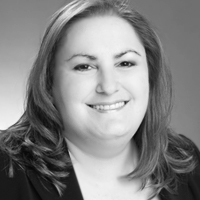Driving and Community Mobility
The first thing we need to consider is how we classify driving, and how we look at driving. According to the AOTA's practice framework, driving is classified as an IADL. The specific title of the occupation is Driving in Community Mobility. The exact definition is listed here is:
Planning and moving around in the community, and using public or private transportation, such as driving, walking, bicycling or accessing and riding in buses, taxi cabs or other transportation systems.
AOTA, 2014, p. S19
It is not just about driving. It is how our clients are able to move about in the community using whatever mode of mobility or transportation is appropriate for them, and their setting, and their abilities.
Another important way that we think about driving in community mobility is that it is considered an occupation enabler. While it does allow us to get from point A to point B, to travel within the community, it also facilitates participation in lots of other areas of occupation (AOTA, 2010; Stav & Lieberman, 2008). If I can drive or be mobile in the community, that means I can get to the grocery store, I can get to work, I can get to my volunteer position, my doctor visits, I can go socialize with friends, have dinner out, get to the golf course or wherever I need to go.
When you consider all the occupations that OTs address, driving and community mobility is really a conduit to all those different areas of occupation. The only area that driving and community mobility probably does not affect is ADLs because we tend to take care of our self-care within our own homes. We do not have to get out into the community to do that. It is an all-encompassing occupation even though it is a community specialty practice area.
Importance of Driving
I also want you to consider the importance of driving. It is so enmeshed in our lives and in society that we really do not even think about it anymore. It has really just become a given. It has been said that driving is so enmeshed in the social and technical aspects of society that is has literally changed society. If we think about 200 years ago on how we engaged with each other, and where we lived, and how far away from home we worked, life is now completely different because we are mobile in the community.
